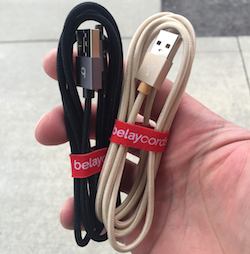Windows Technical Preview 2 was released on Microsoft’s website and made available for download. Usually, this process is a challenge because we don’t always have the best and newest hardware available to test with; but I tend to find what I can in the lab to test as many features as possible. I took a bare-metal Dell PowerEdge server (with a RAID 5 drive setup), and installed off of a burned DVD.
In a recent blog post, Mozilla (makers of the popular Firefox browser) plans to set a date by which non-encrypted [1] websites would see access to browser features gradually removed. While the details aren’t yet clear as to the timeframe, or exactly what features will be limited; but it’s a definite message that powerful players are pushing encryption on everyone. This trend of “encrypt everything” is becoming very troubling.
Today, I noticed the public preview for Office 2016 is available on Microsoft’s site. The downloaded file is very small and goes out to download the rest of the application by way of “streaming” [1]. On a 25mbs Internet connection, I had the application installed in about 10 to 15 minutes. Given that a new version of Microsoft Office is a major milestone (and something everyone will a computer will eventually need to use), I thought I’d take a look at what’s new.
OwnCloud, a file syncing service like Dropbox. Files are stored locally on the user’s computer, as well as on the Owncloud server. Since the files are stored in OwnCloud, you can have many clients running on several computers keeping these files in sync. Naturally, an OwnCloud server needs to be set up, and I thought it was time to build one.
Taking screenshots is one of the most common things you’ll do with your computer. You may want to record something you can’t easily save, and want it clearer than taking a picture of your monitor would yield. Today’s Basics article is about taking screenshots.
I took the plunge on The Freedman Chair and backed the project on October 27th, 2013. The Freedman Chair was successfully funded less than 48 hours later. This presented me with the opportunity to chart the progress of this project as well as share my experiences both with shipping and the chair itself.
With Apple Pay and various smartphone payment options hitting the market, we have a society that is very close to being cashless. But, what if we stop using and paying with cash altogether? Cash certainly intrinsic benefits that electronic currency can’t touch. If we lose this, some might say that we’ll lose a lot.
The benefit of backing smaller projects appears to be how much faster they can turn a pledge into a real product. This was the case with BelayCords; A USB cable replacement for the stock Apple cable (with support for others too). With a pledge date of September 9th, 2014, the BelayCords I ordered took 210 days to arrive.
Today, I thought it might be interesting to show you something I sent to a young fellow who is interested in the technology field. I had sit down with him to discuss what I do, and some of the things he might look into and he emailed me a few days later. What follows is my advice to him.
I have taken the plunge and purchased an Electric Vehicle. Join me as I learn more about this new technology, push the limits and help you understand if buying a car like this is worthwhile










